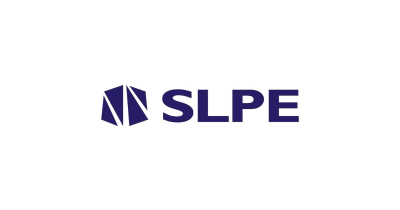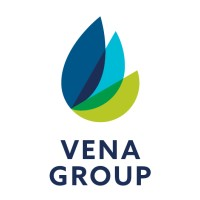Offshore Foundations: Day 2 - 28/08/2025
8:30 - 9:00
Registration and Welcome Coffee
9:00 - 9:05
Conference Opening
Ricardo Rocha -
Managing Director, Baywa R E Projects (Portugal),
BayWa r.e.
9:05 - 9:35
Status on the development of the new ISO 25249 series of standards, covering Corrosion Protection of Offshore Wind Structures
Birit Buhr -
CHIEF CORROSION ENGINEER,
European Energy
9:35 - 10:05
Chemical emissions from offshore wind farms: from compound identification to risk assessment
Dr. ir. David Vanavermaete -
Research Associate,
Flanders Research Institute for Agriculture, Fisheries and Food
• A literature study and leaching experiments allowed to identify more than 200
compounds that can be potentially emitted from offshore wind farms
• Organic, inorganic and particulate contaminants were measured on-field by targeted and
untargeted approaches
• Source identification is essential, as most identified compounds can originate from
multiple sources
• Lack of occurrence and detailed toxicity data hamper a full risk assessment

Dr. ir. David Vanavermaete
Research AssociateFlanders Research Institute for Agriculture, Fisheries and Food

10:05 - 10:35
Impact of Corrosion on Welded Offshore Steel Joints over Time: Results of the German CorroFAT project
Dr. Sulaiman Shojai -
Group Leader for Structural Integrity,
DLR, Institute of Maritime Energy Systems
• Analysis of weld geometry change based on 3D-scans of up to 12-month corroded
specimens in accelerated salt spray chamber test.
• 3D-scan reveals: With higher exposure durations, the sharpness of butt welds increases,
while it decreases for fillet welds.
• Reduction of fatigue strength with a single reduction factor according DNV do not cover
the physics.
• Fatigue reduction due to corrosion depends on the initial notch category: Highest fatigue
reduction in base material and lowest for fillet welded joints.
• Long term corrosion leads to an equalization effect: mild notches becoming sharp and
vice versa.

Dr. Sulaiman Shojai
Group Leader for Structural IntegrityDLR, Institute of Maritime Energy Systems

10:35 - 11:05
MP-TP Optimization possibilities with the C1 Wedge Connection
Jasper Winkes -
Director,
C1 Connections BV
- Foundation weight savings
- Installation savings
- Maintenance benefits.
11:05 - 11:35
Refreshment Break and Networking
11:35 - 12:05
Structural integrity management of Offshore Wind Farm with existing fabrication defects
Dr Jessica Taylor -
Senior Engineer,
Kent
• Fatigue and fracture assessments of over 1500 defects
• Probability of structural failure - which feeds into the safety case
• Ongoing monitoring & inspection requirements
• Lookahead to the future of the wind farm
12:05 - 12:35
Beyond the Depths: Redefining the Viable Envelope for Deep-Water Monopile Design
Joseph Hilton -
Managing Director,
SLPE
Scott Whyte - Director, Geowynd
12:35 - 13:05
Fatigue assessment of circumferential welds – Current discussions
Dr.-Ing. Marc Seidel -
Principal Engineer,
Siemens Gamesa
• Improved S-N-curves by testing
• Thickness correction based on plate thickness, weld width or both?
• The length effect – is it a risk?
13:05 - 13:35
State-of-the-Art Virtual Sensing for Offshore Wind Turbines
Johan Toftekær -
Senior Engineer,
Vattenfall
• The derivation of virtual sensing method based only on measured accelerations.
• Separation of translation and inclination contributions to measured accelerations.
• Quantification of the uncertainty of virtual sensing by benchmarking with local strain
gauge measurements.
• Quantification of design load case specific uncertainties.
• Perspectives on the use of virtual sensing for operation, maintenance and lifetime
extension of Vattenfall’s offshore wind fleet
13:35 - 14:30
Lunch Break and Networking
14:30 - 15:00
Fatigue resistance of non-welded structural details in support structures for wind turbines
Dr.-Ing. Florian Kalkowsky -
Researcher,
Fraunhofer IGP
• Fatigue tests on non-welded structural details as Free Edges, Holes and Openings
• Consideration of the material strength, manufacturing method and post-treatment on the
fatigue resistance
• Classification and derivation of resistance values for fatigue design
• Design recommendations
15:00 - 15:30
Round Table Session – Choose one out of 4 round tables and discuss with your peers.
Offshore Foundations - Room Zürich 3
15:00 - 15:30 Round Table A XXL Monopiles – Where is the limitOffshore Foundations - Room Zürich 3
15:00 - 15:30 Round Table B The comparison of CAPEX for Fixed Project vs Floating Projects Ting Sie Chui - Offshore Structural Manager, Vena Group
15:30 - 16:00
Fatigue life assessment of M72 bolts in MP-TP connections
Prof. Ali Mehmanparast -
Professor of Structural Integrity,
University of Strathclyde
Dr. Carol Johnston - Technology Fellow - Large Scale Testing, TWI Ltd
• Stress distribution in threaded connections
• S-N fatigue curves for design of threaded connections
• Fatigue test results on M72 studs & bolts
• Mean stress effect on fatigue life
• Other considerations for future research



























